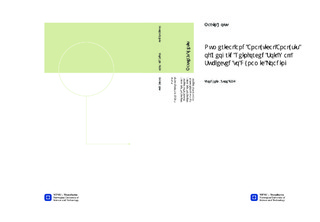Numerical and Analytical Analysis of Geogrid Reinforced Soil Wall Subjected to Dynamic Loading
Master thesis
Permanent lenke
http://hdl.handle.net/11250/232227Utgivelsesdato
2012Metadata
Vis full innførselSamlinger
Sammendrag
The potential human and economic loss due to structural collapse of geo-synthetic reinforced soil walls during earthquakes us huge. This substantiates the need for reliable design of such structures. The focus of this study was numerical and analytical design geo-synthetic reinforced soil walls under dynamic loading. Two topics were addressed; the effect of reinforcement parameters and verification of pseudo-static methods. The study is based on a 1 m high reduced-scale shaking table model loaded using stepped-amplitude harmonic base acceleration amplitude. A numerical PLAXIS model was developed and verified using physical model data. Material properties of the components (e.g. backfill and reinforcements) were based on information from a similar model developed using FLAC. The numerical model was used in a parameter study of the effects of reinforcement length and strength on the failure surface, facing displacements and reinforcement loads. The accuracy of pseudo-static methods was studied by comparing physical model results with predictions using the Mononobe-Okabe, the horizontal slices and two-part wedge method. Furthermore, guidelines for the Mononobe-Okabe method in different seismic design codes (i.e. Eurocode, FHWA/AASTHO and PIANC) were compared. Based on this comparison a new pseudo-static coefficient was developed. The reinforcement length and strength were found to have a significant effect on model response. For example, an increase in reinforcement axial stiffness will give a shallower failure surface and reduced the lateral facing displacements. Neither the Mononobe-Okabe, nor the horizontal slice, or the two-part wedge method was able to predict both the failure surface and the earth forces for a wide range of acceleration amplitudes. It was found that different pseudo-static methods are suitable for different predictions (e.g. of the failure surface) at different acceleration amplitudes. For example, single wedge pseudo-static methods gave good predictions for the active earth force and failure surface shape for acceleration amplitudes up to 0.30g, but not for higher amplitudes. FHWA/AASHTO were found to give better predictions for the failure surface and earth forced (when using Mononobe-Okabe) than the Eurocode and PIANC guidelines. Even so, the failure surface predicted using FHWA/AASHTO was too shallow compared to the physical measurements for acceleration amplitudes up to 0.30g.
